For people who need assistance moving around, walking frames? Also known as Zimmer frames in the UK? are essential devices. The elderly, those recovering from surgery, or people with conditions that affect their physical stability frequently use these important aids.
With the help of these frames, users can maintain their daily routines with less reliance on carers or family members, giving them a much-needed sense of independence.
.
The risk of falls and injuries significantly decreases thanks to walking frames’ stability and support. The industry-leading frames have features like padded hand grips and non-slip rubber feet designed with user safety and comfort in mind.
Many frames have height adjustments to be customised to the individual user’s requirements for maximum comfort and functionality. These frames’ easy manoeuvrability and lightweight yet sturdy construction improve user experience.
Reviewing some of the top walking frames on the market has been a privilege for us. In our reviews, we’ve considered robustness, user comfort, safety features, and usability.
We sincerely hope that our in-depth and unbiased reviews will be helpful to you in your search for the ideal walking frame, giving you the confidence to make an informed decision based on your unique requirements and preferences.



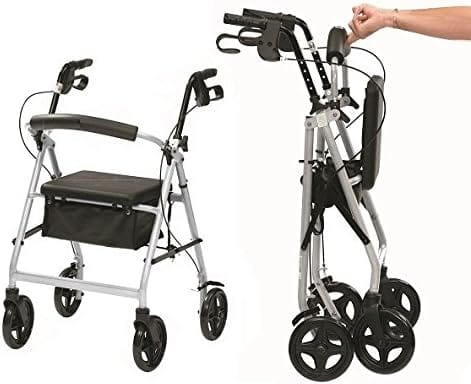


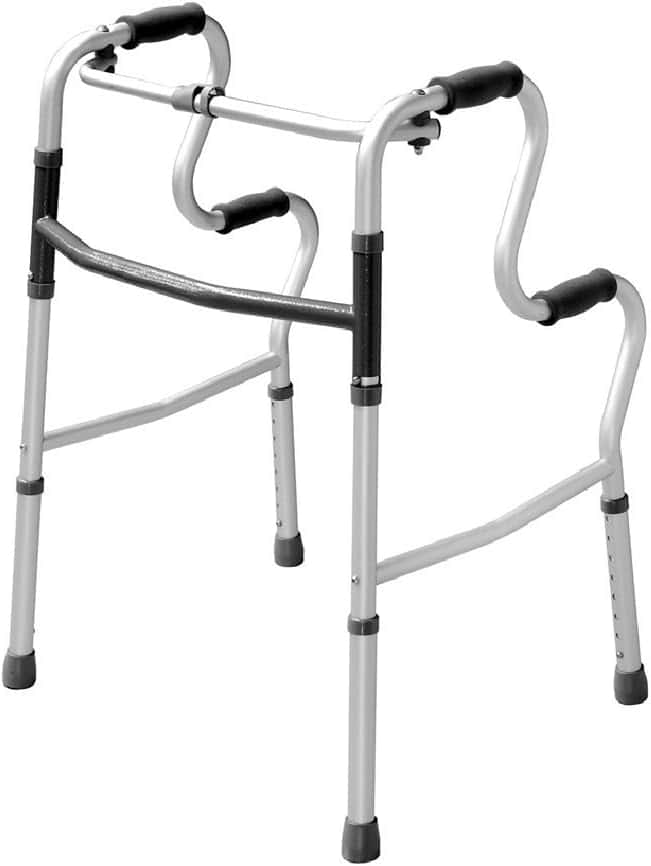
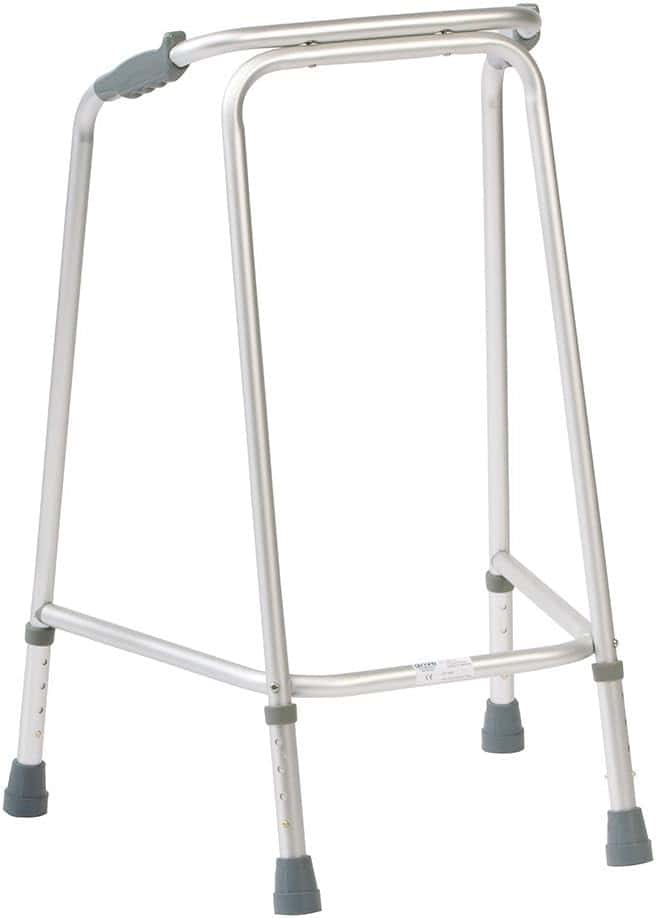
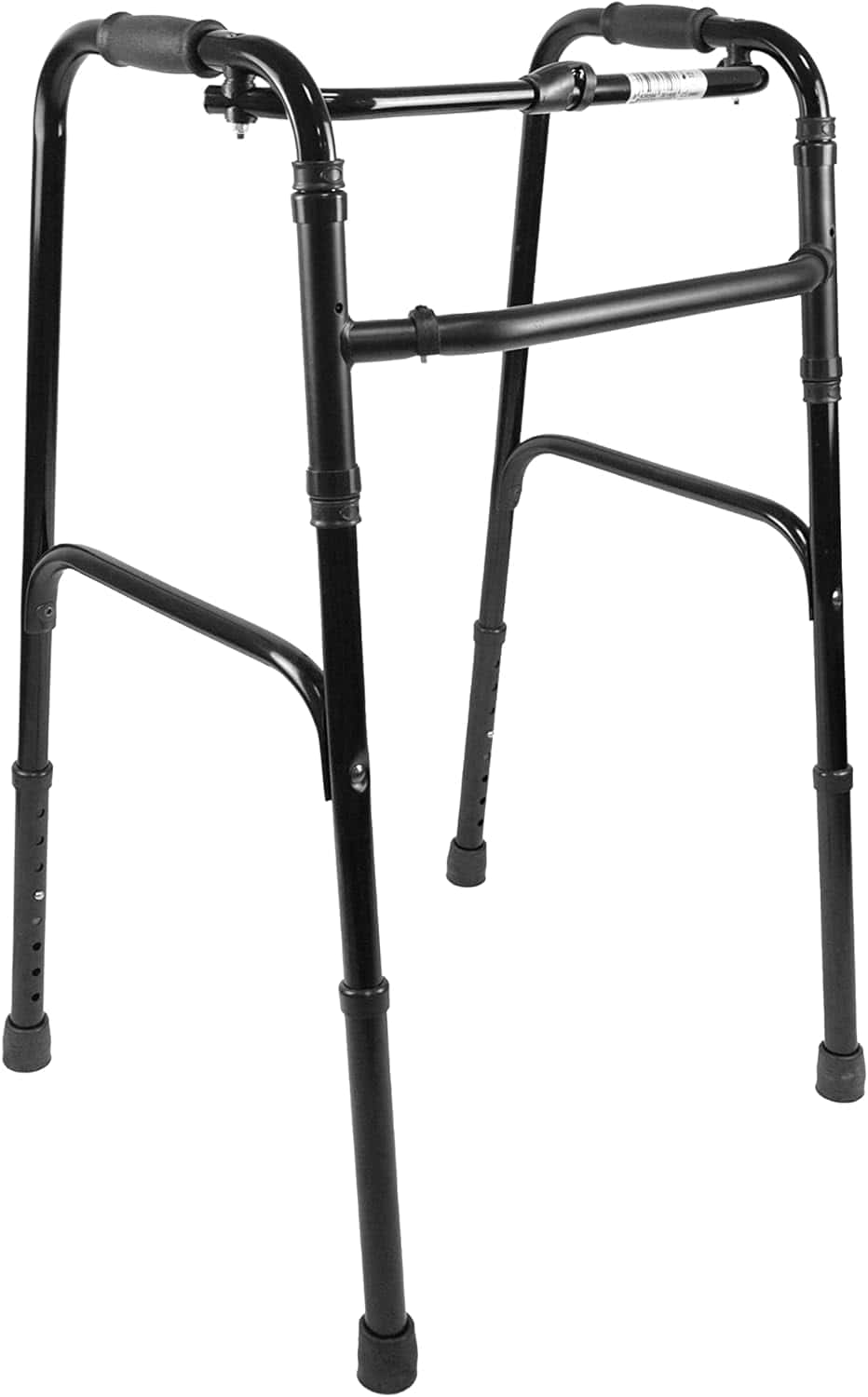
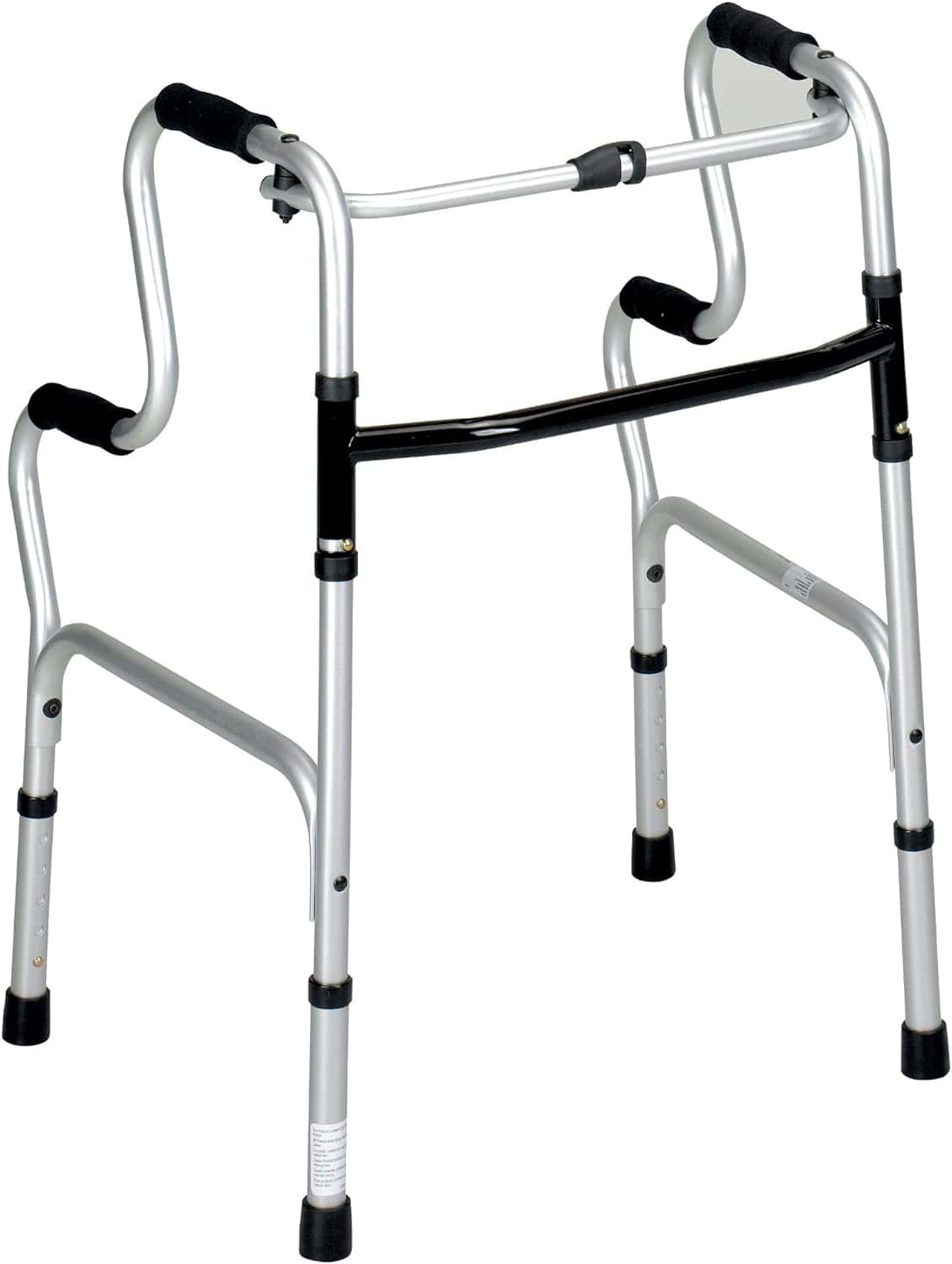
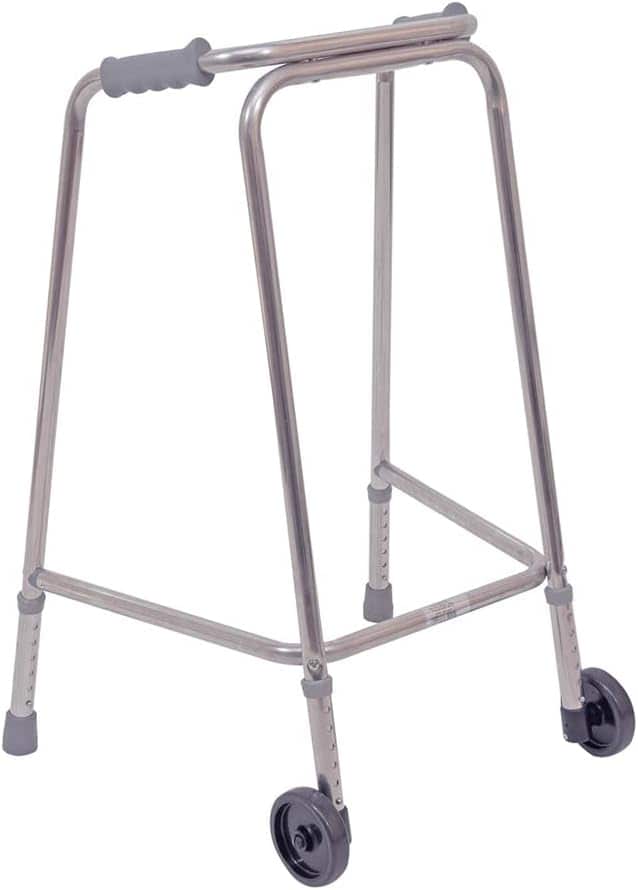
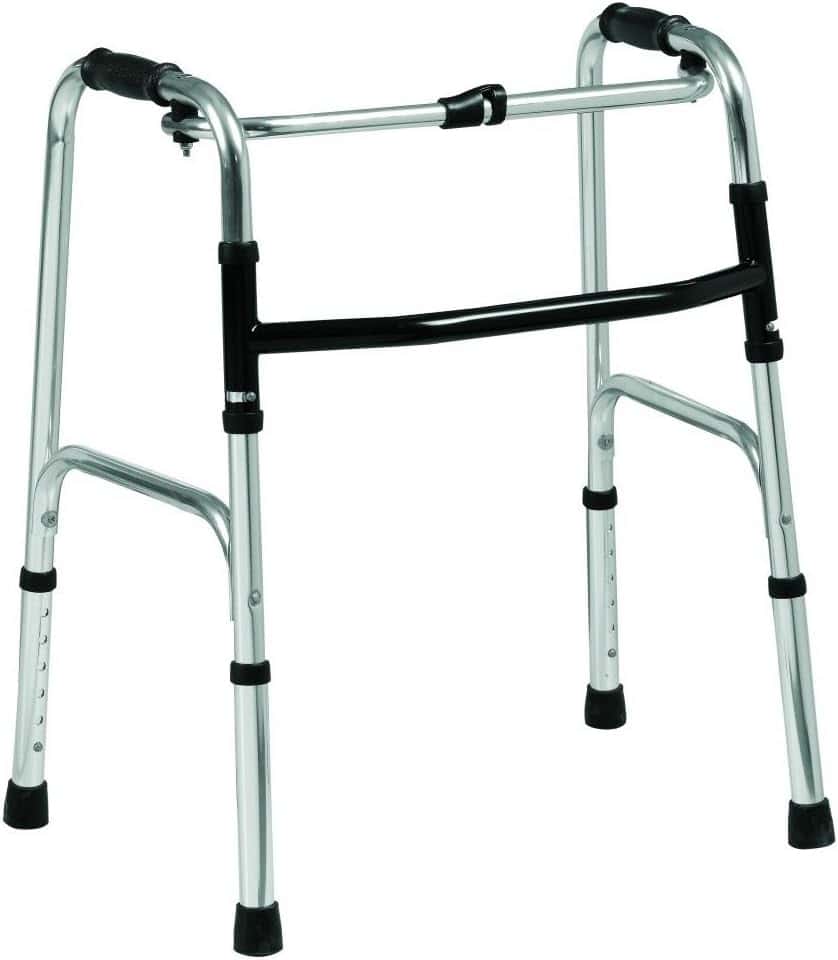
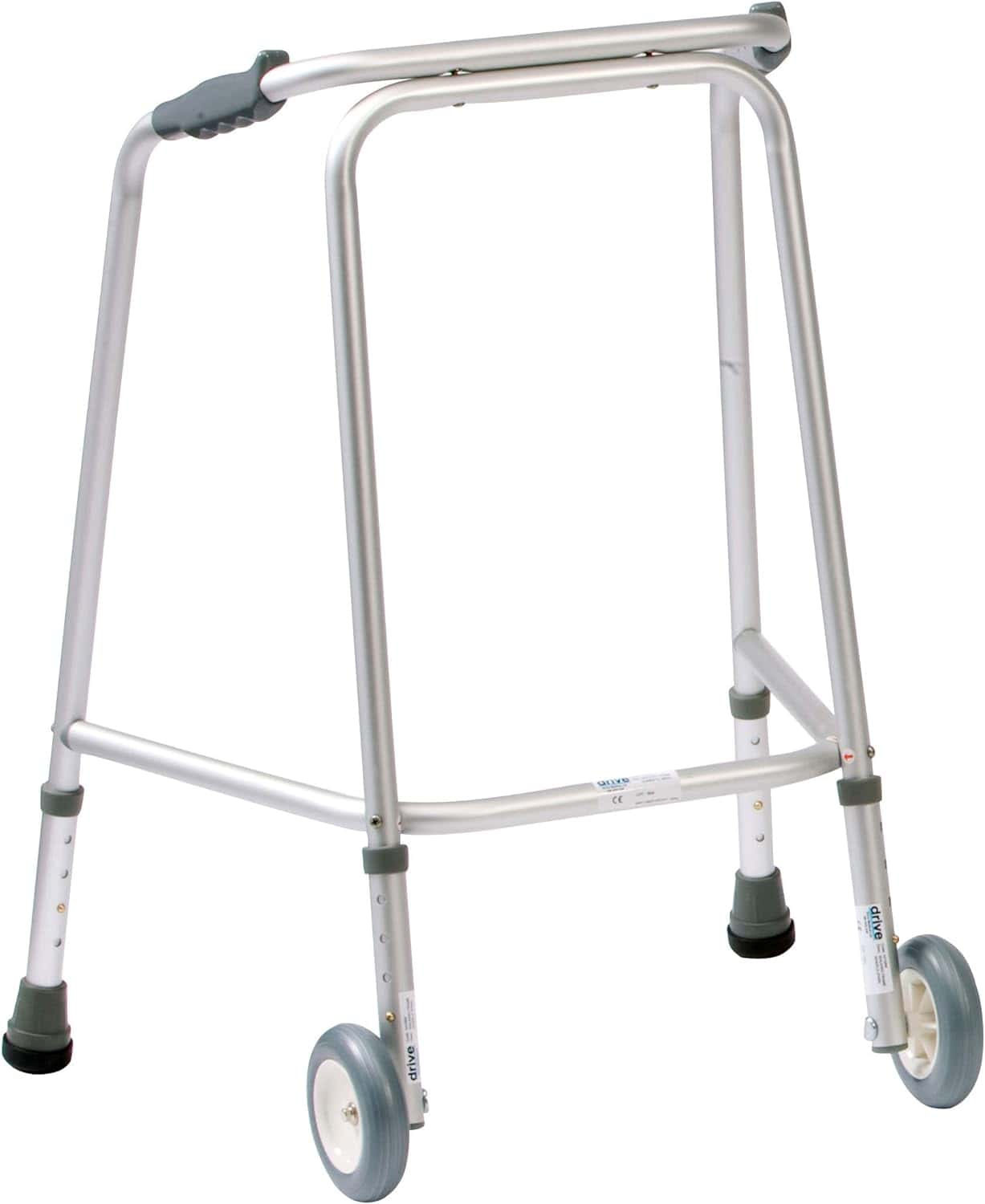
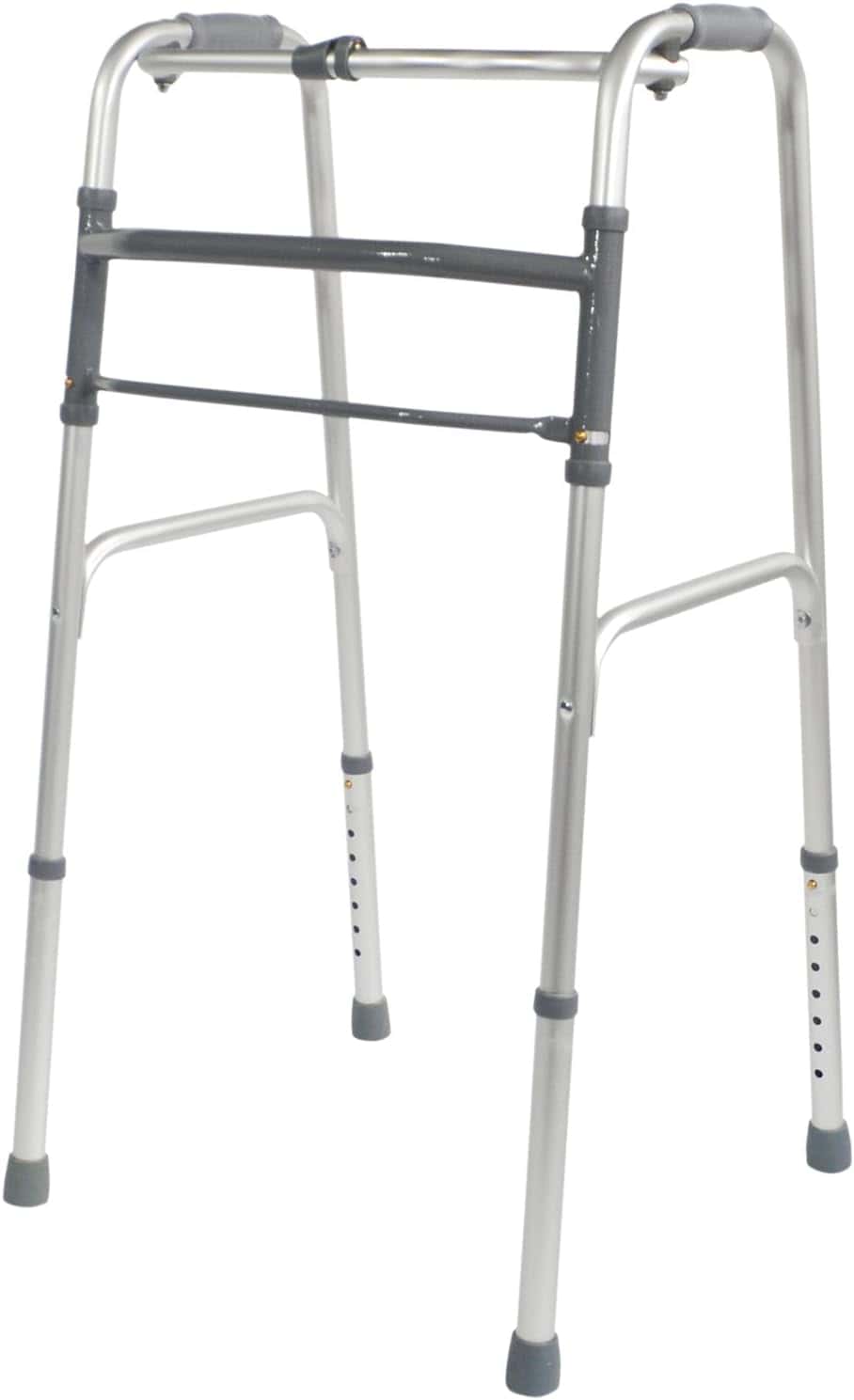
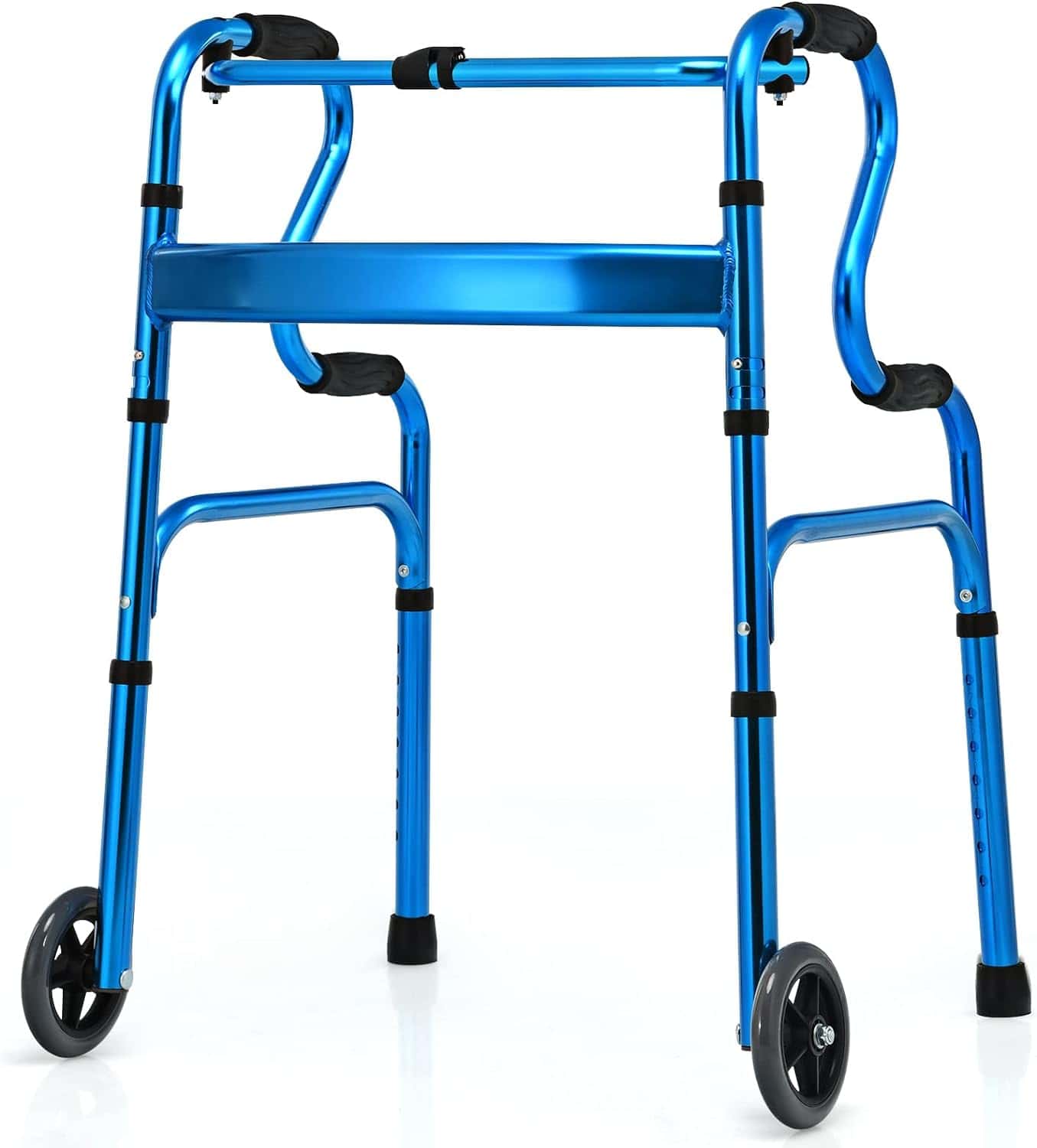
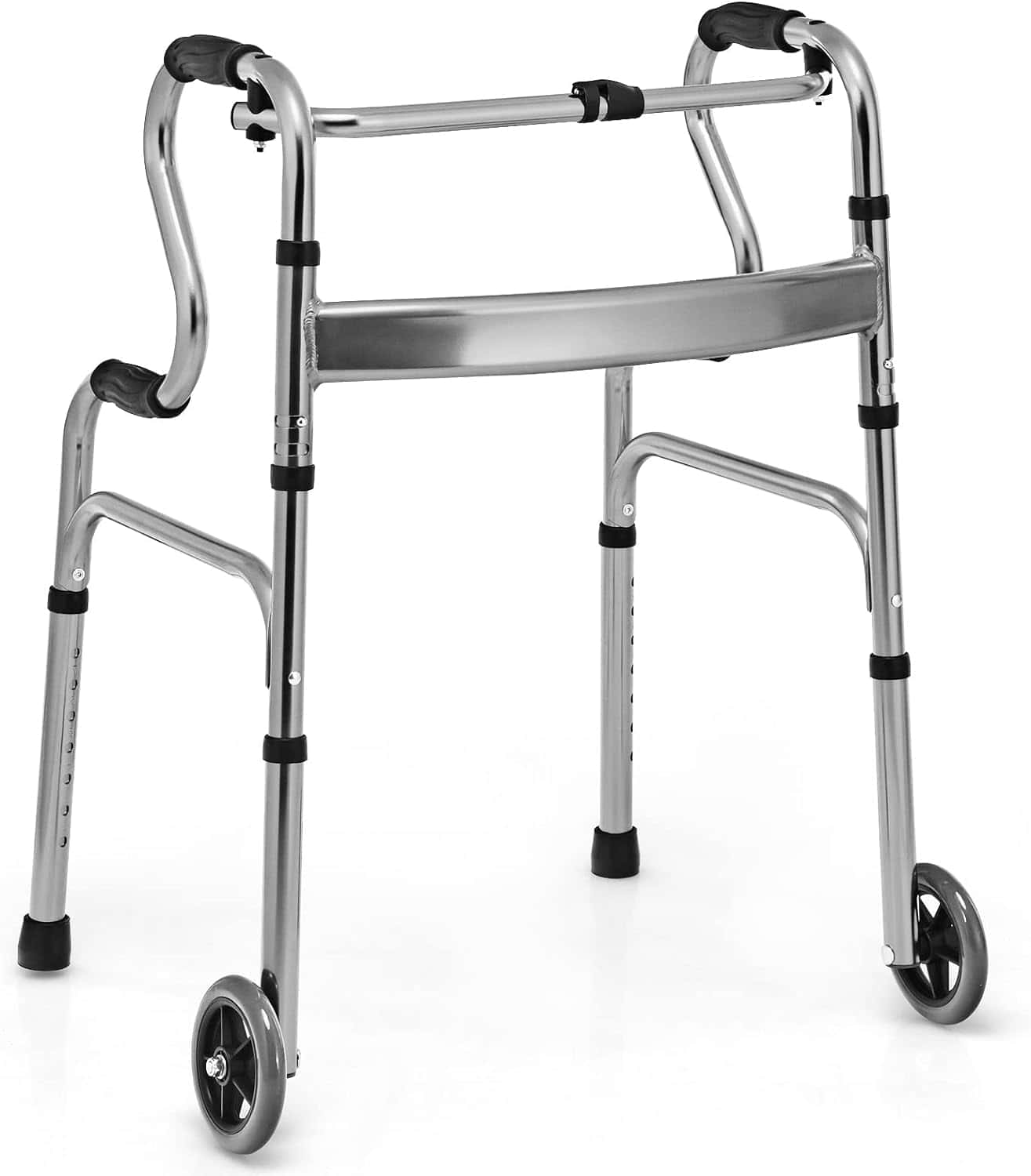
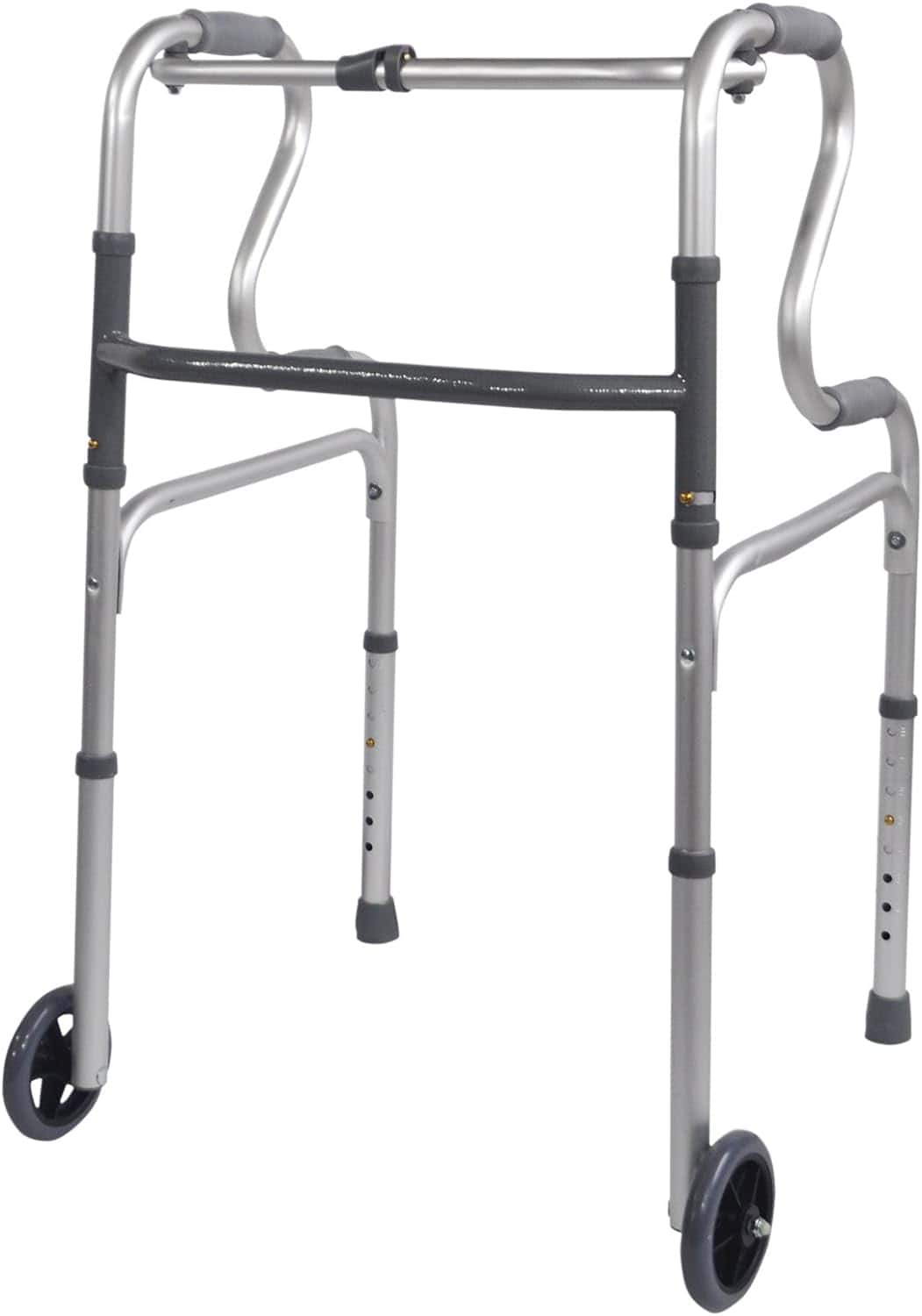
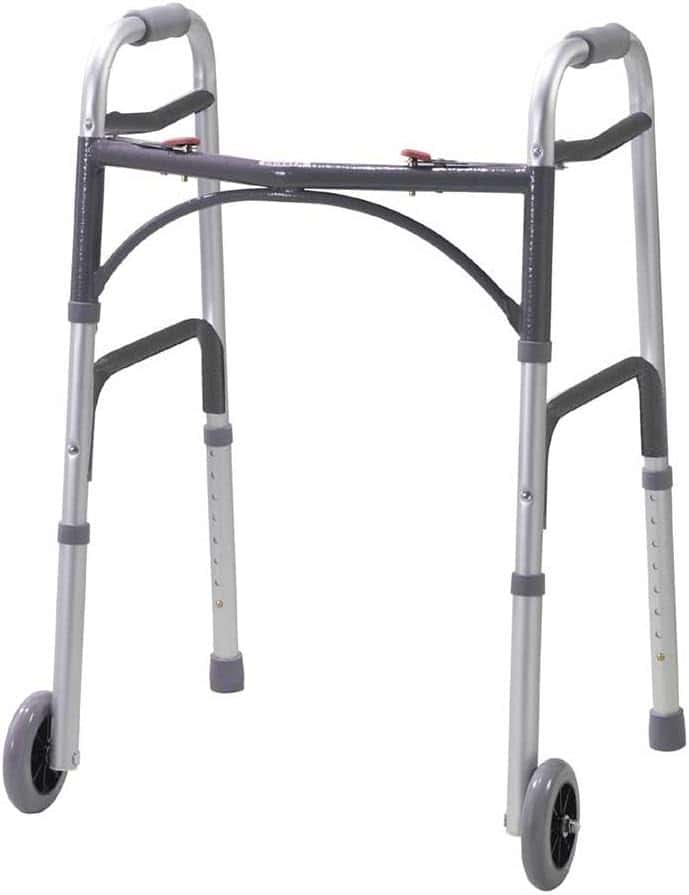
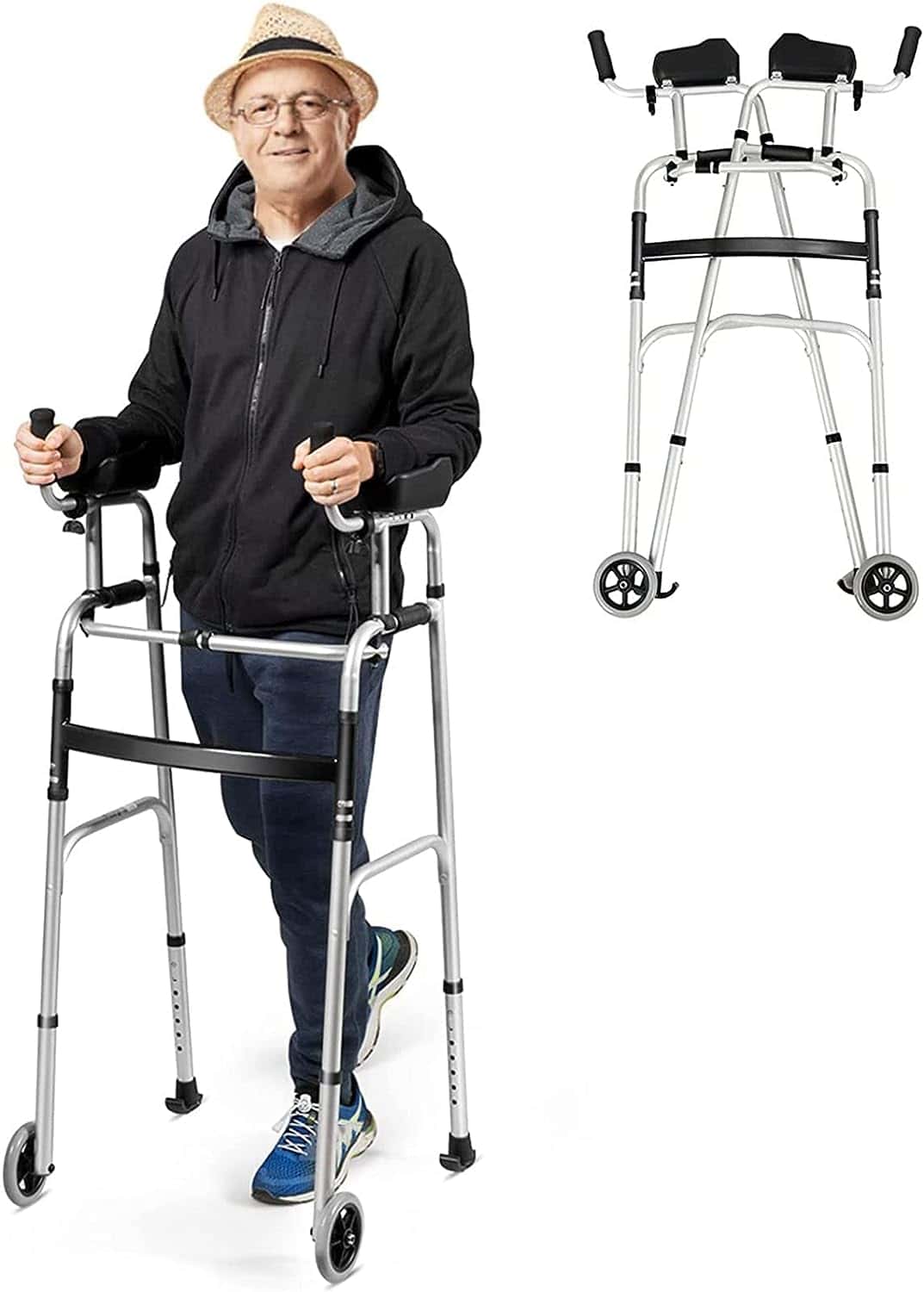
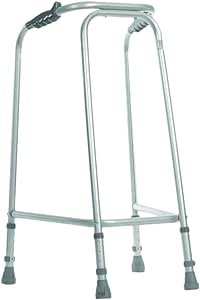
A lightweight walking frame is an excellent mobility aid for people with limited strength or endurance. These frames are lighter and easier to manoeuvre, especially for older users or recovering from surgery.
They are frequently made of materials like aluminium and are created to be strong yet lightweight. Users who use a lightweight walking frame can continue with their daily activities without making an excessive amount of physical effort.
These frames frequently have padded hand grips for comfort and rubber non-slip feet for safety built into their design. Some models come with extra features like a seat or basket for convenience.
An example of a valuable add-on for the frame that makes it possible to carry items around the house is the Buckingham Walking Frame Caddy. Additionally, foldable, lightweight walking frames are simple to transport or store. This is especially advantageous for those who live in small apartments or travel frequently.
Many people find folding walking frames convenient because they can conveniently store them in a car trunk or storage cabinet.
A lightweight walking frame stands out among the many mobility products on the market because of its usefulness, ease of use, and convenience. It can significantly improve the user’s quality of life with other daily living aids like shower chairs or dressing aids.
When selecting a walking aid, it is essential to consider the user’s particular needs and preferences. Some people might find that a walking stick suffices, while others might need the added stability that a walking frame or a wheeled walker, also known as a rollator, can provide.
When choosing the best walking aid, an occupational therapist can offer insightful advice. The user’s home environment should also be taken into account. A very narrow walking frame might be more appropriate for those living in small spaces.
Alternatively, a mobility scooter or a wheeled walking frame might be more suitable for outdoor use. Various accessories can improve a walking aid’s functionality and the device itself. These can include walking stick ferrules for a better grip on the ground and wheelchair accessories like a bag for personal items.
For those who need to carry things while using their frame, a supplement like the Buckingham Walking Frame Caddy is helpful.
Finally, it is worthwhile to visit several websites and keep an eye out for sales. This guarantees value for money and provides a broader selection of goods. Additionally, some websites offer delivery details, which may be especially helpful for people who need help to visit a physical store.
When buying a walking frame, certain features should be prioritised to ensure maximum comfort and usability. The structure should be height-adjustable to accommodate the user’s height and lessen pressure on the hands and shoulders.
Padded hand grips can add to comfort, particularly for those who heavily rely on the shelf for support. Stability is another important consideration. The frame must have non-slip rubber feet or wheels to avoid slipping on various surfaces.
Some models even come with wheels, making them appropriate for use inside and outside. The frame’s size and weight should also be taken into account. A folding structure can be easily stored and transported, while a lightweight frame is easier to manoeuvre.
An exceptionally narrow frame might be the best option for people with limited space. Finally, consider any extra features that could make the frame more functional. This could be a tray for meals, a seat for resting, or even a basket for carrying things. A basic structure can become more practical with accessories like the Buckingham Walking Frame Caddy.
Today, a wide variety of mobility products are available. There is an aid for almost every need, ranging from bathboards and dressing aids to walking frames and mobility scooters. These tools are made to help people maintain their daily routines and improve the quality of their lives.
Walking frames offer essential support and stability, whether conventional, light, collapsible, or extremely narrow. On the other hand, mobility scooters provide independent transportation for those who find walking challenging.
A curved stairlift can be an excellent investment for people who need help ascending and descending stairs.
The aids for daily living are yet another crucial category. These include bath steps and shower chairs for safer bathing, as well as dressing aids and medication management tools. Even everyday household items like bathboards and recliners can significantly improve a user’s independence and comfort.
Finally, it’s critical to remember that the ideal mobility aid is tailored to the individual’s unique requirements and situation. So, it’s always a good idea to consult an occupational therapist or other healthcare expert before purchasing.
UK Care Guide is really proud to have been featured on some of the UK’s leading websites.

















Jane is one of our primary content writers and specialises in elder care. She has a degree in English language and literature from Manchester University and has been writing and reviewing products for a number of years.
